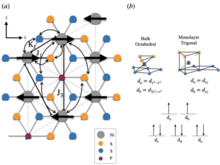Past Events
"Decoding behavior: optimization and inference of decision-making processes" by Prof. Antonio Celani
2025-11-14Professor Antonio Celani is Head and Senior Research Scientist at The Abdus Salam International Centre for Theoretical Physics ICTP
"Table-top Experiments Inspired by Geophysical Phenomena" by Prof. Jun Zhang from NYU & NYU-Shanghai
2025-11-10Prof. Jun Zhang, graduated and received his BS degree from Wuhan University in China, and earned his Ph.D. in Physics at the University of Copenhagen, Denmark. After a postdoctoral experience in biophysics at Rockefeller University, he came to NYU and started building the Applied Math Lab at the Courant Institute and later he became a faculty member (physics and math) there. His research interest has been in the field of physics of fluids and complex systems, which includes biomechanics or bio-locomotion (organismal swimming and flying), geophysical fluids (thermal convection, continental dynamics, and erosion), solid-on-solid friction, urban heat-island effect, and self-organization phenomena at many different scales.
Seminar: "Exploration of the Mpemba effect: an anomalous heat relaxation process" by Prof. Hisao Hayakawa
2025-10-21Prof. Hisao Hayakawa from Yukawa Institute for Theoretical Physics, Kyoto University
Seminar: “On the Absence of the Ultimate Regime in Turbulent Thermal Convection” by Prof. Mahendra Verma
2025-09-29Speaker: Prof. Mahendra Verma, Dept of Physics & Kotak School of Sustainability, Indian Institute of Technology Kanpur, India
Seminar: “Annealing Amorphous Solids using Oscillatory Shear and Active Dopants and Memory Formation” by Prof. Smarajit Karmakar
2025-05-20Speaker: Prof. Smarajit Karmakar, Tata Institute of Fundamental Research, India
Seminar: “Biotremologist dreaming to be an insect: A brief introduction to a hidden world of vibrational communication” by Dr. Meta Virant-Doberlet
2025-02-25Speaker: Dr. Meta Virant-Doberlet, Department of Organisms and Ecosystems Research, National Institute of Biology, Ljubljana, Slovenia
[Seminar] An introduction to self-similarity of the first and second kind
2024-07-16Speaker: Dr. Shreyas Mandre
University Associate Professor of Fluid-Structure Interaction, Department of Engineering, University of Cambridge
Hosted by: Professor Mahesh Bandi, Nonlinear and Non-equilibrium Physics Unit
When physical processes repeat over either growing or shrinking scales (length and/or time), the dynamics shows self-similarity. The condition of self-similarity appears strict, but it is the building block of mathematical modelling. This lecture covers (i) concept of scale invariance as a pre-requisite for self-similarity, (ii) self-similarity in physical systems and mathematical models, (iii) the two kinds of self-similarity -- the first and second kinds, and (iv) a simple mathematical example to elucidate the second kind of self-similarity. The lecture presents examples from fluid dynamics. No previous knowledge of or experience with scale-invariance or self-similarity is assumed.
Current Advances in Turbulence and multiphase flowS - 24CATS
2024-04-16 to 2024-04-19OIST Workshop | Website | Main organizer: Marco Edoardo Rosti (Complex Fluids and Flows Unit) | OIST members are welcome to attend all scientific sessions. Meals are closed sessions for registered participants.
[Seminar] Flows and Topological Changes During Tissue Morphogenesis
2024-04-08Speaker: Professor Luiza Angheluta-Bauer, Condensed Matter Physics, University of Oslo
Hosted by Professor Mahesh Bandi Nonlinear and Non-equilibrium Physics Unit
Abstract:
Collective structural arrangements and cell migration are important physical processes underlying tissue development and regeneration. Understanding the complexity of cell-cell interactions and the emergence of collective behaviors at the tissue scale presents formidable challenges both experimentally and theoretically.
In this talk, I will discuss recent theoretical work on the dynamical patterns that emerge at the tissue scale from localized rearrangements and topological defects. Using a multi-phase field model, we demonstrate that tissue fluidity stems from cell neighbor exchanges, serving as transient sources of vortical flow. This flow emerges from the relative dispersion of cells at a rate proportional to the frequency of rearrangements. Balancing collective migration with relative cell motion appears to be essential for maintaining tissue shape and fluidity. Using a cell-based model, we study the tissue's response to the presence of a vortex. While solid-like behavior tends toward conical shapes, localized fluidization triggers the transition to a tube, which is fundamental in biological tissues.
Spin model for the Honeycomb $\rm NiPS_3$, Prof. Paula Mellado, Adolfo Ibáñez University
2024-02-06Prof. Paula Mellado, Adolfo Ibáñez University
Language: English.











